Since at least 2022, certain TikTok videos have led users to wonder about the meaning of the phrase “meeting Medusa.” Those who look into it are inevitably saddened to learn that it’s code for incidents of sexual violence. Certain readings of the myth of Medusa say that she met herself when Poseidon assaulted her in a sacred shrine, and the gods then punished (or perhaps helped) her by transforming her into a monster.
As the trend accelerated in 2024, survivors started showing off their Medusa tattoos on TikTok. Awareness of the meaning behind the symbol spread, shocking those who didn’t yet know how many have suffered from this trauma.
@hi_tehh #viral #truma #medusa #zyxcba #fyp ♬ original sound – Life In Every Word – MusicBrokerPH
‘I met Medusa at…’: What the TikTok phrase means
References to meeting Medusa have appeared on TikTok in both comments and videos for years, but awareness of the meaning behind the phrase didn’t spread much outside of survivor communities until 2024. The horror starts to set in when you look into just how many people have met the myth.
The number of posts that come up when searching for terms like “meeting Medusa” serves as a wake-up call for those who didn’t yet know how appallingly common sexual abuse is. Statistics in the National Library of Medicine last updated in August 2023 say that 26 percent of girls and five percent of boys experience some form of this traumatic assault. And it quite often happens more than once.
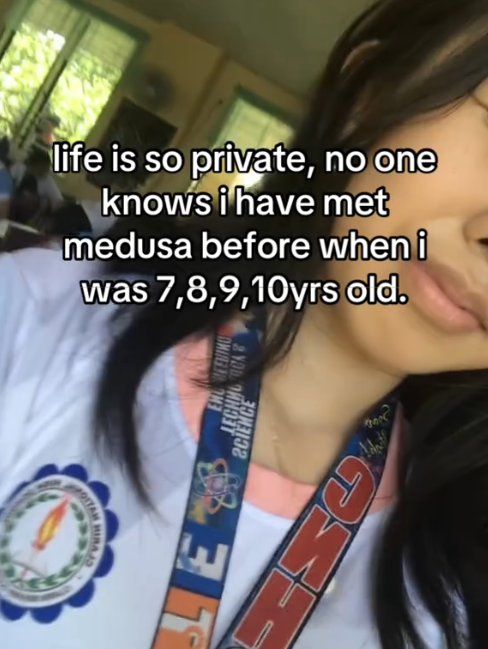
In one video, user @diossa_mabelle21 writes “life is so private, no one knows i met medusa before when i was 7, 8, 9, 10 yrs old.” Others says they met her when they were as young as two.
The earliest of these TikTok videos appeared in 2022, typically as a series of still images that tell a story. On Oct. 2, 2022, user @hellokittymybff told her tragic tale through the metaphor of her first meeting Medusa at age nine and continuing to encounter her through the years as the mythical figure expressed sadness and encouraged her to speak out.
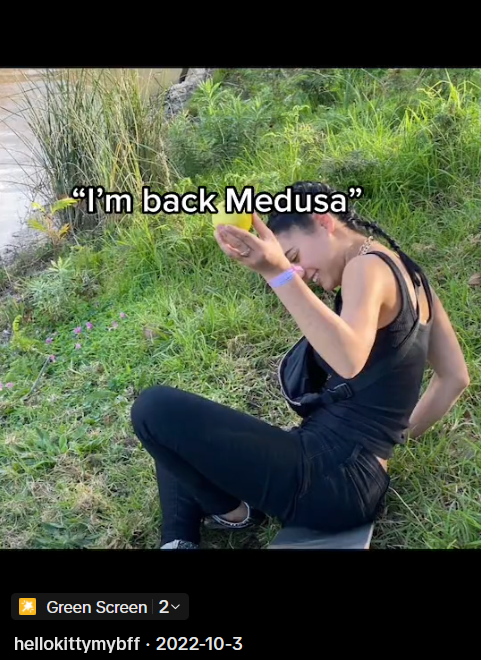
What is the story of Medusa?
There are multiple versions and readings of the ancient myth of the Gorgon with snakes for hair who could turn people to stone with a look. In one reading, Medusa and Poseidon had a consensual affair, and in another, the god violently assaulted the woman. In either case, Athena was furious because the act took place in her shrine, desecrating it and disrespecting her. Unable to punish a fellow god, she took her anger out on Medusa.
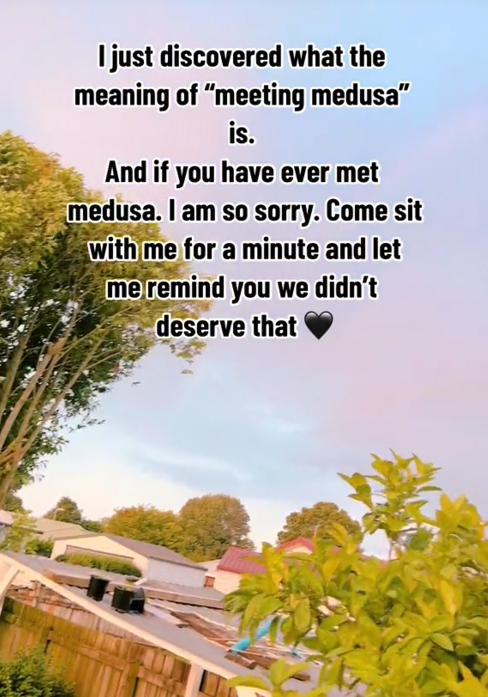
Some modern readings even claim that giving Medusa the power to turn others to stone was not a punishment. Instead, Athena was granting a victim of assault the power to defend herself in the future. Feminist interpretations have long theorized that Medusa was only portrayed as a monster because men feared and hated a woman they couldn’t touch without consequences.
“In Western culture, strong women have historically been imagined as threats requiring male conquest and control, and Medusa herself has long been the go-to figure for those seeking to demonize female authority,” said Elizabeth Johnston in her 2016 essay “The Original ‘Nasty Woman.’”
Medusa tattoos and the language of survival
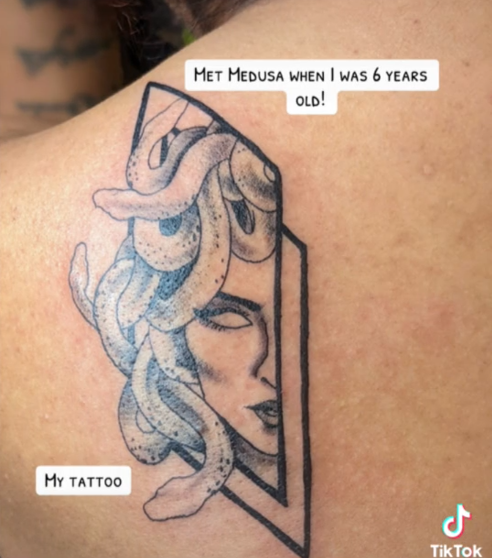
Videos referencing Medusa in this way multiplied in 2024, as did related tattoos. Showing off this kind of ink became common in TikTok survivor communities, bringing yet more attention to the issue. It got to the point that on July 2, 2024, tattoo artist @hearttrey went viral with a demonstration of his reaction to learning the meaning behind “meeting Medusa.”
“POV: After doing hundreds of Medusa tattoos, someone finally tells you you what they actually mean,” the caption reads. His face falls into grief as he says, “I’m so sorry.”
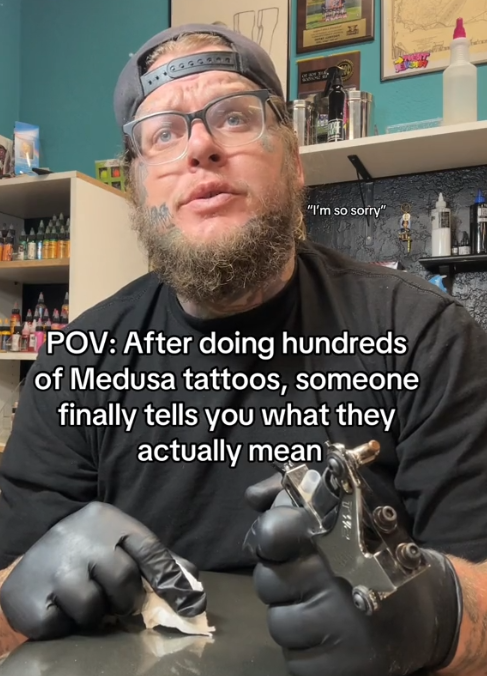
That video gained over 16.2 million views and 1.4 million likes over the months since he posted it.
Sad as it may be, this ink represents a powerful statement. In early 2025, Parade Magazine spoke with therapist Anita Astley on the symbolism behind Medusa tattoos for survivors.
“I believe the Medusa tattoo is the perfect visual depiction of a survivor’s journey from pain to resilience, strength, empowerment and self-preservation—a protective symbol, as she has the ability to destroy those who are a threat to her being,” she said. “This tattoo says a thousand words and is a permanent stamp of survivorship. Not hiding but displaying it for all the world to see.”
If you are a survivor of sexual assault, harassment, or violence or want more resources on sexual assault, contact the Rape, Abuse & Incest National Network at 1-800-656-HOPE (4673) or the National Sexual Violence Resource Center by going to nsvrc.org.
The internet is chaotic—but we’ll break it down for you in one daily email. Sign up for the Daily Dot’s web_crawlr newsletter here to get the best (and worst) of the internet straight into your inbox.


